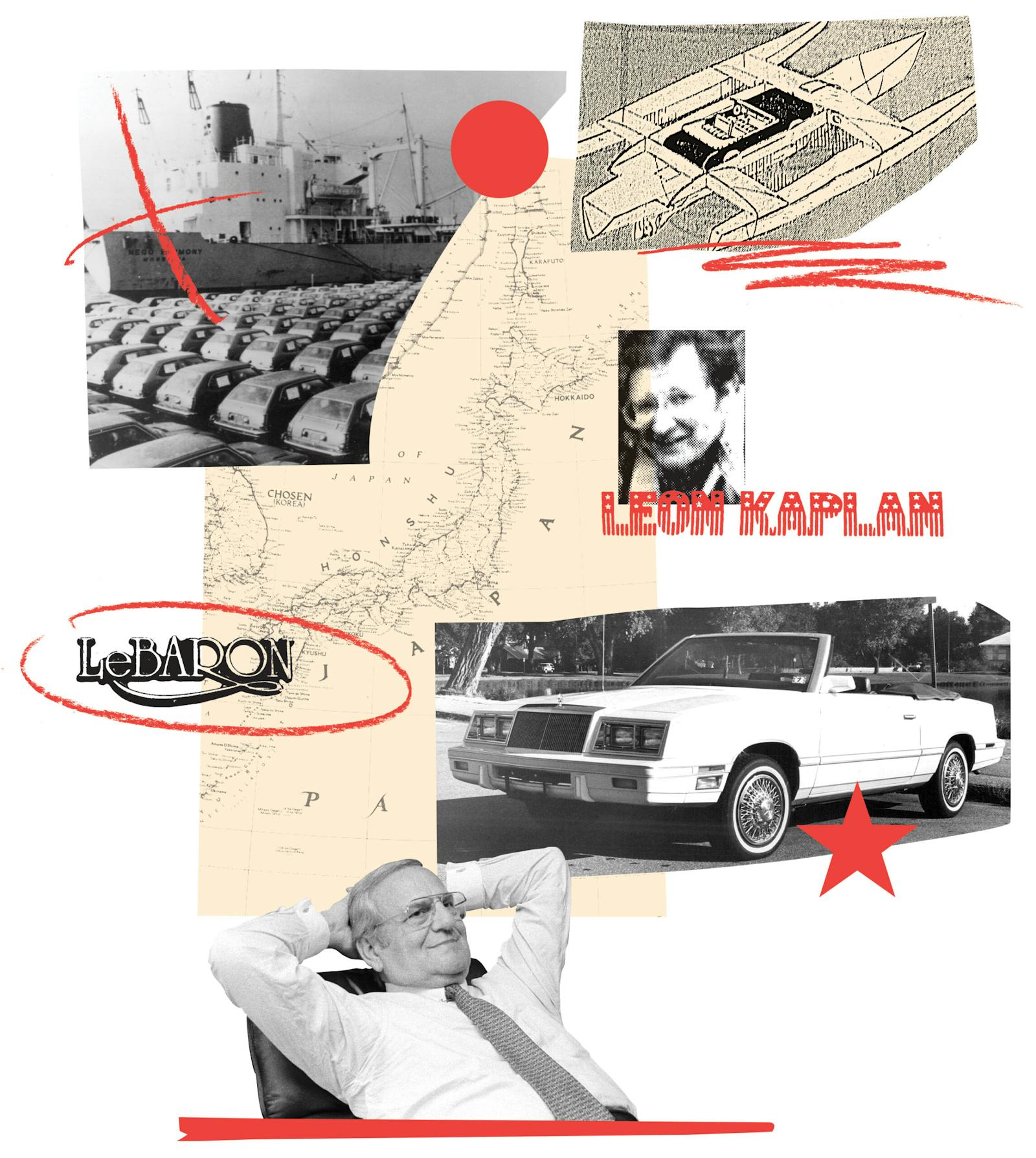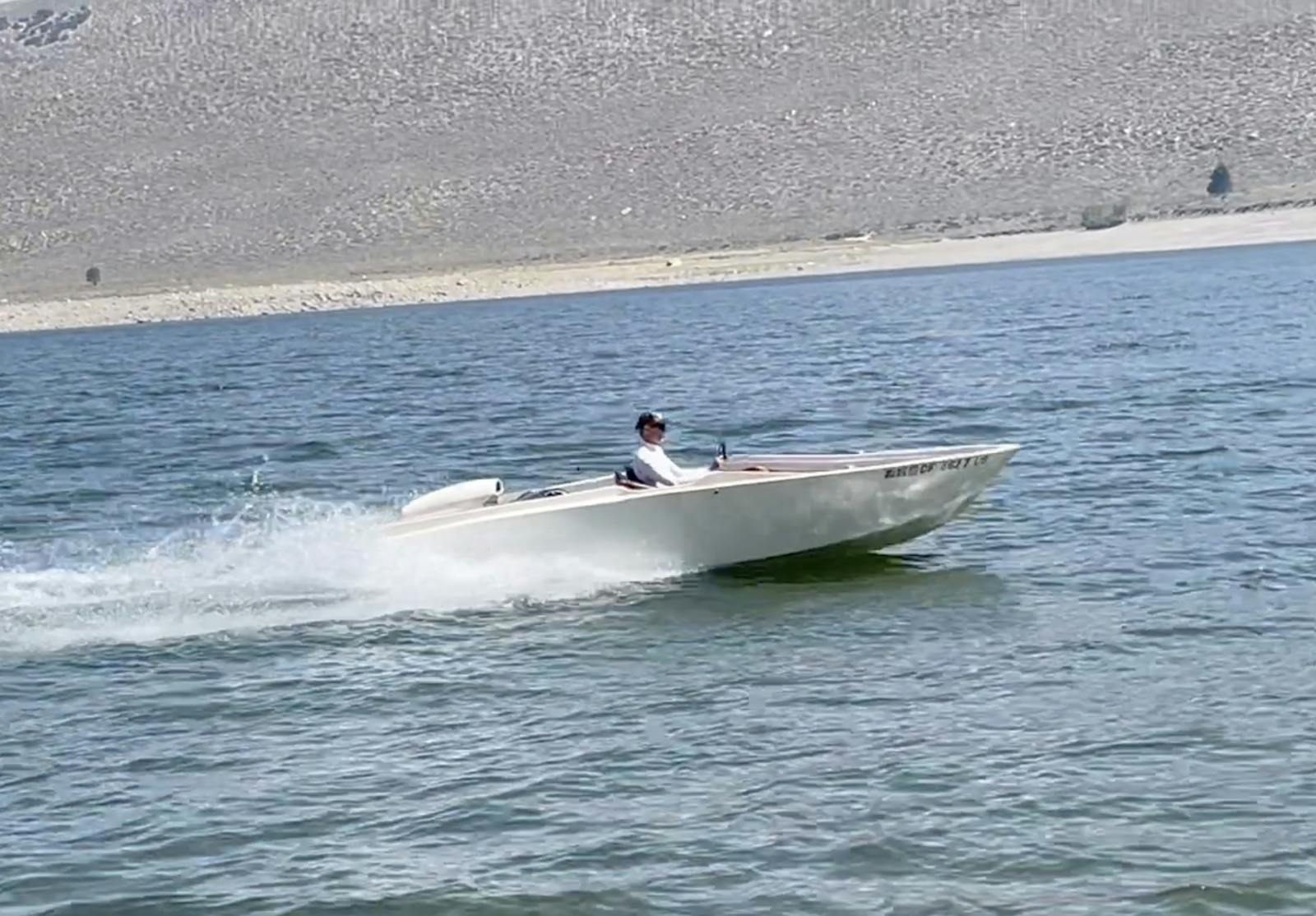“Barnegat Belle” proudly shows off racing heritage
Barnegat Belle (shown here at a classic boat event) is a 1946 Gar Wood 22′ 6” pleasure boat whose mahogany hull and deck shine, polished to a smooth and glossy varnished finish.
Garfield “Gar” Wood made his money on land, and spent it on the water. At age 31, Wood invented a hydraulic lift for unloading coal from rail cars. Later, his company helped develop the garbage truck and at one point, Wood held more US patents than any other living American. But from a young age, he was always a boat racer, having grown up on Minnesota’s lakes with a father who worked as a ferryboat operator. From his racing knowledge and experience came his recreational family production boats.
Barnegat Belle shows that racing heritage. Her length-to-beam ratio and underwater running surface demonstrate her Chris Smith/Nap Lisee/Gar Wood speedboat performance heritage. She is truly something special on the water.
Plus, as a post-war boat, styling touches by industrial designer Norman Bel Geddes are included. Note the chock hardware at the bow, along with the other bow mounted metal trim and, further aft, her windshield. Continuing aft, notice the metal trim and how it draws your attention down the deck wood’s curves from the deck into the transom.
She is properly called a utility in classic boating circles, as she is not all deck between the individual seating cockpits that identifies a classic runabout. The open cockpit of this utility design offers seating in three rows. Plus plenty of walk-around room. Finally, she is powered by a fairly rare marine Chrysler straight-8 that generates 143HP at 3,200 RPM—the top engine for this model.
For a glimpse of Gar Wood’s brilliance (if not eccentricity) consider that he designed the future Miss America X in chalk on his carpet at home. These carpet sketches would ultimately become his famous 38′ speedboat. He drew a four-engine boat around the concept of two tandem engines and each pair of engines in two banks. Miss America X needed that many engines to go fast enough to win the upcoming Harmsworth Trophy Competition. Wood’s Miss America IX (a twin-engine racer) had a best speed of 111.712 mph. His competition, Kaye Don’s Miss England III, did 120.5 mph.
The Harmsworth rules called for a boat maximum LOA of 40′. Thus packaging was a driving force in designing a four-engine racer. Wood wanted his 12-cylinder engines bolted together to effectively run as one 24-cylinder engine on each side. His team’s Packard engineers wanted a flexible coupling between the two V-12s to allow for misfires, but Wood couldn’t spare the space. He wanted the two engines tuned as one 24-cylinder engine.
Then, the engineers informed him that there weren’t gearboxes strong enough to handle the tandem V-12’s torque. The answer was simple: Wood designed his own gearbox. So much for the drivetrain issues that his experts couldn’t overcome.
As an aside, Wood and his experts continued working on the engines every day for months, finally getting each 24-cylinder monster to 3,600 hp at 2,500 rpm. All told, she was producing 7,200 hp. Launched in July 1932, Miss America X set a world record of 124.91 mph on September 30, 1932.
For the hull, Wood showed the chalk sketch to Joseph Napoleon Lisee, “Nap”. Back in 1905, Chris Smith of Chris-Craft had hired Nap, then 34, to turn his whittled hull models into boat plans and, later, into boats. Nap had such a keen eye that his son once claimed, “Why, I believe [Nap] could spot a 1/8-inch variance in a joint 150 feet away.” Eventually, Nap left with Gar Wood when Smith bought out Gar Wood’s controlling financial interest in C. C. Smith Boat & Engine Co.
Barnegat Belle may not be a race boat, but as a restored classic woody, she delights the eye at pier side, gives a glorious boating experience on the rivers and bays from Connecticut to Florida and is true to her distinguished heritage.


